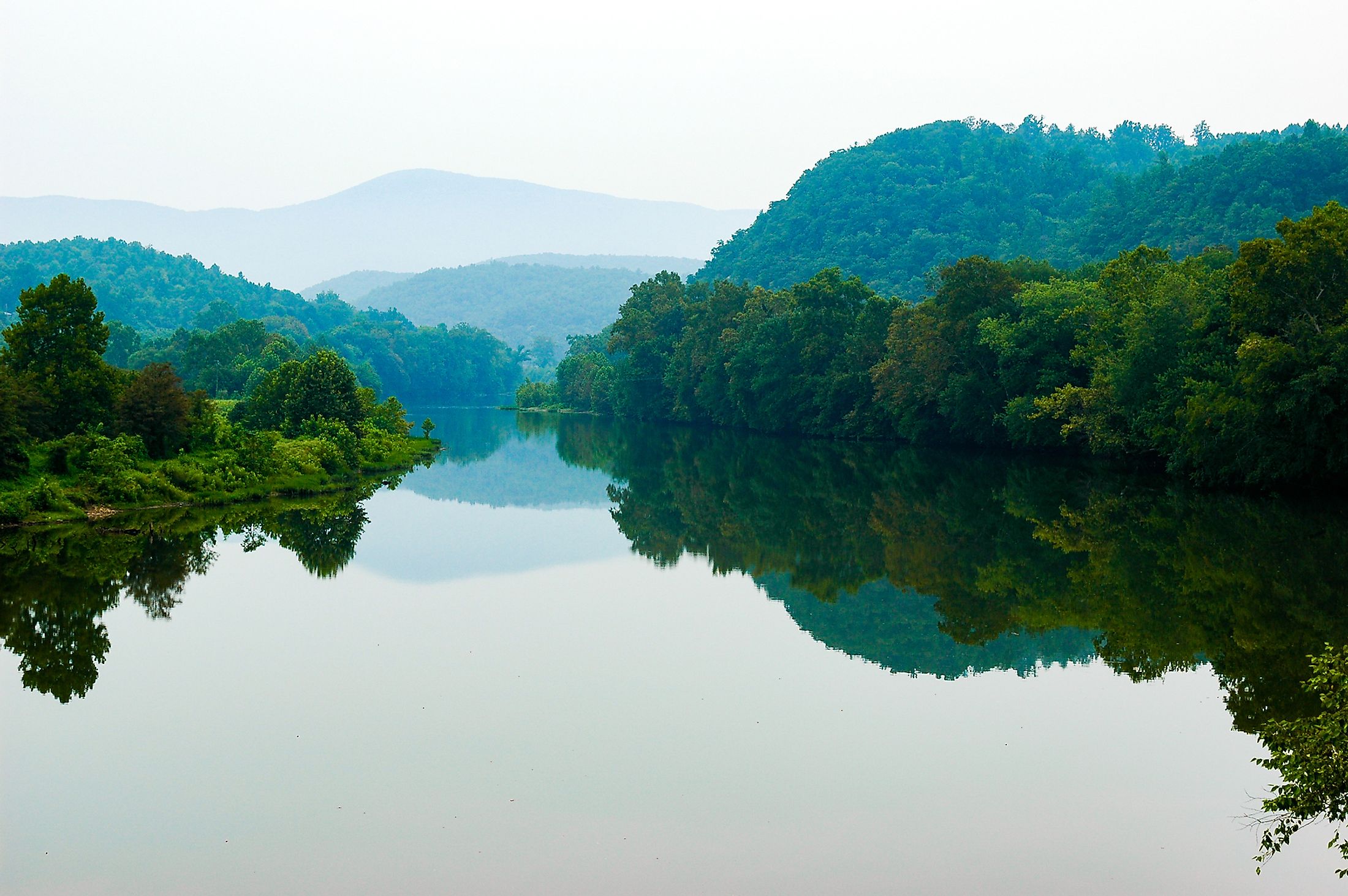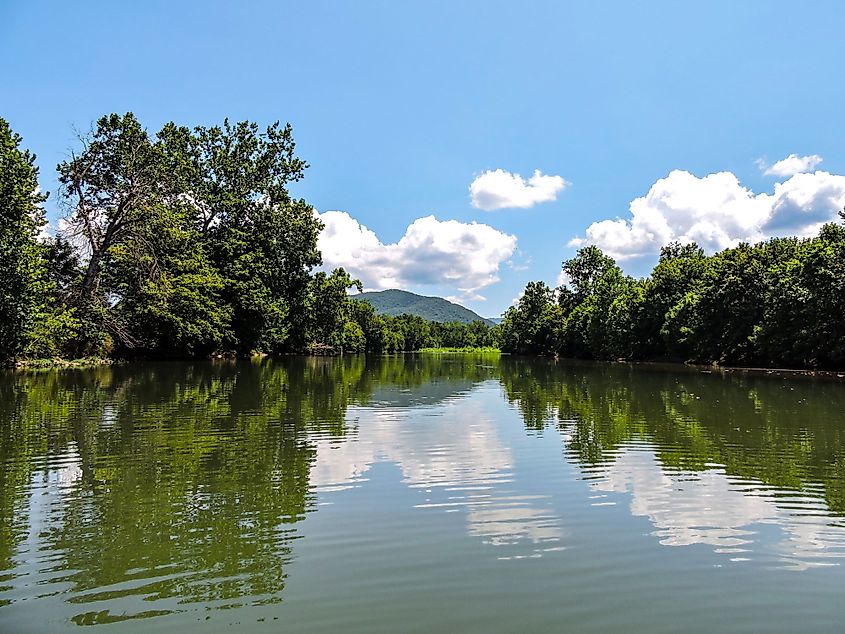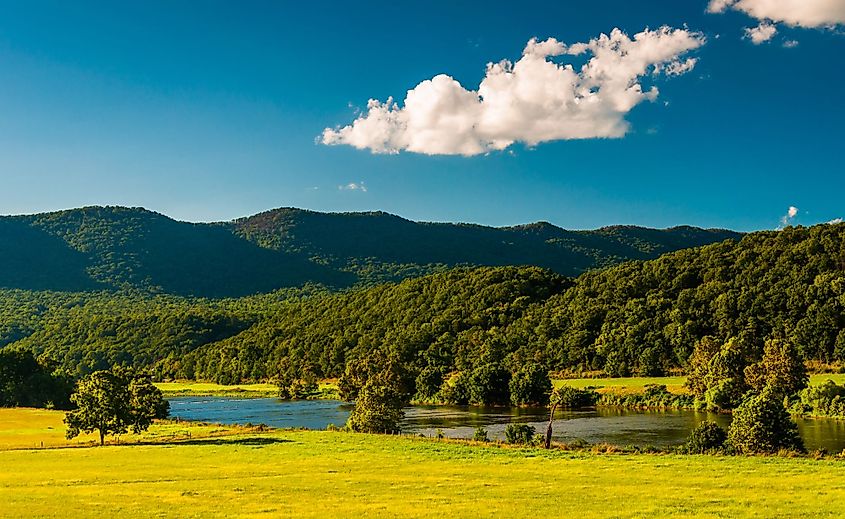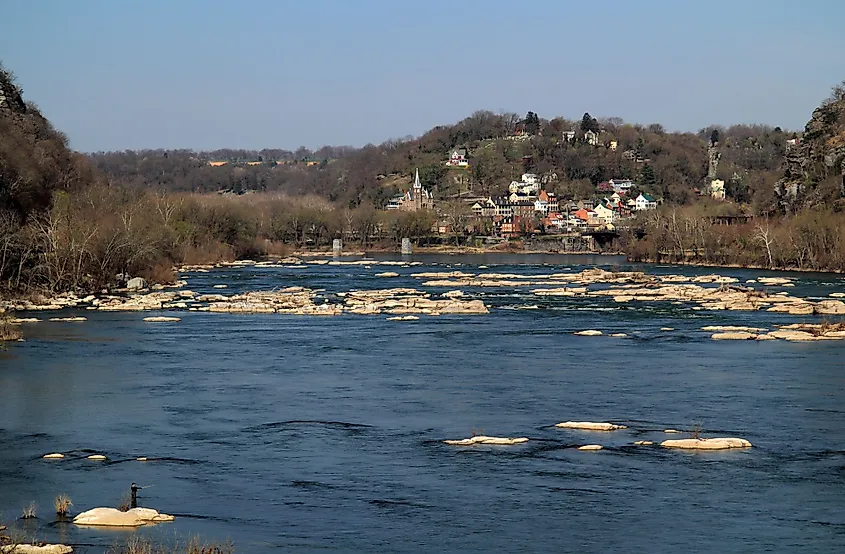
Shenandoah River
The Shenandoah River is a major tributary of the Potomac River that flows through the US states of West Virginia and Virginia. The 89.5km long Shenandoah River along with its two tributaries – the North Fork Shenandoah and the South Fork Shenandoah drains the middle and lower portions of the Shenandoah and the Page Valley in the Eastern panhandle of West Virginia and the northwestern part of Virginia.
Geography

The 169km long North Fork of the Shenandoah River originates in the George Washington National Forest along the eastern sides of the Shenandoah Mountain, in the northern part of the Rockingham County of Virginia. The North Fork Shenandoah River initially flows down from the mountains in the southeast direction and then in the northeast direction through the Shenandoah Valley. The river then flows past the towns of Woodstock and Strasburg in Shenandoah County. On the northern edge of the Massanutten Mountain, the North Fork Shenandoah River briefly flows in the southeast direction and joins the South Fork Shenandoah River.

The 158.5km long South Fork of the Shenandoah River is formed by the confluence of the North and South Rivers at the unincorporated community of Port Republic in the southern part of the Rockingham County of Virginia. The South Fork Shenandoah River then flows in the northeast direction past the towns of Shenandoah and Elkton, through the picturesque Page Valley that is surrounded by the Massanutten Mountain in the west and the Blue Ridge Mountains in the east.

The main stem of the 89.5km long Shenandoah River is formed by the confluence of the North Fork Shenandoah River and the South Fork Shenandoah River in the northeastern part of the town of Front Royal in the Warren County of Virginia. The Shenandoah River flows in the northeast direction passing through the Warren and Clarke counties and then crosses into Jefferson County in West Virginia. In West Virginia, the Shenandoah River completes six large bends and then drains into the Potomac River close to the historic town of Harpers Ferry at the meeting point of the US States of West Virginia, Maryland, and Virginia.
The Shenandoah River, therefore, serves as a major waterway and drainage system of the Shenandoah Valley. There are a total of 22 tributaries of the Shenandoah River, of which 9 are in West Virginia and 13 are in Virginia. The drainage basin of the Shenandoah River covers an area of about 7,610 sq. km. The Shenandoah River and its tributaries also serve as a popular destination for water sports offering many recreational activities such as canoeing, fishing, kayaking, rafting, and river tubing for its visitors. Many fishes like Common carp, Channel catfish, largemouth bass, smallmouth bass, yellow bullhead fish, redbreast sunfish, northern hogsucker, etc are found in the Shenandoah River.
Brief History
There are two theories regarding the origin of the river’s name. Some people believe that both the river and the valley were named by George Washington in the honor of John Skenandoa, who served as the chief of the Native American tribe of Oneida. However, some other accounts believe that the river was named after the indigenous Senedo people who lived for a short period along the North Fork of the river between 1650 and 1700. Archaeological excavations have revealed the presence of many caves along the course of the river. It is believed that the fertile soil of the area made the Shenandoah Valley a major agricultural region in West Virginia and Virginia as well as a favorable place for settlement by the early settlers. In 1669, Europeans first arrived in the Shenandoah Valley and towards the end of the 18th century, the Shenandoah River started functioning as a major trading route.











